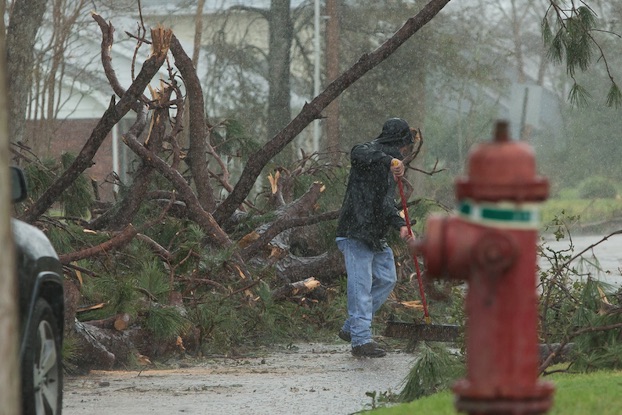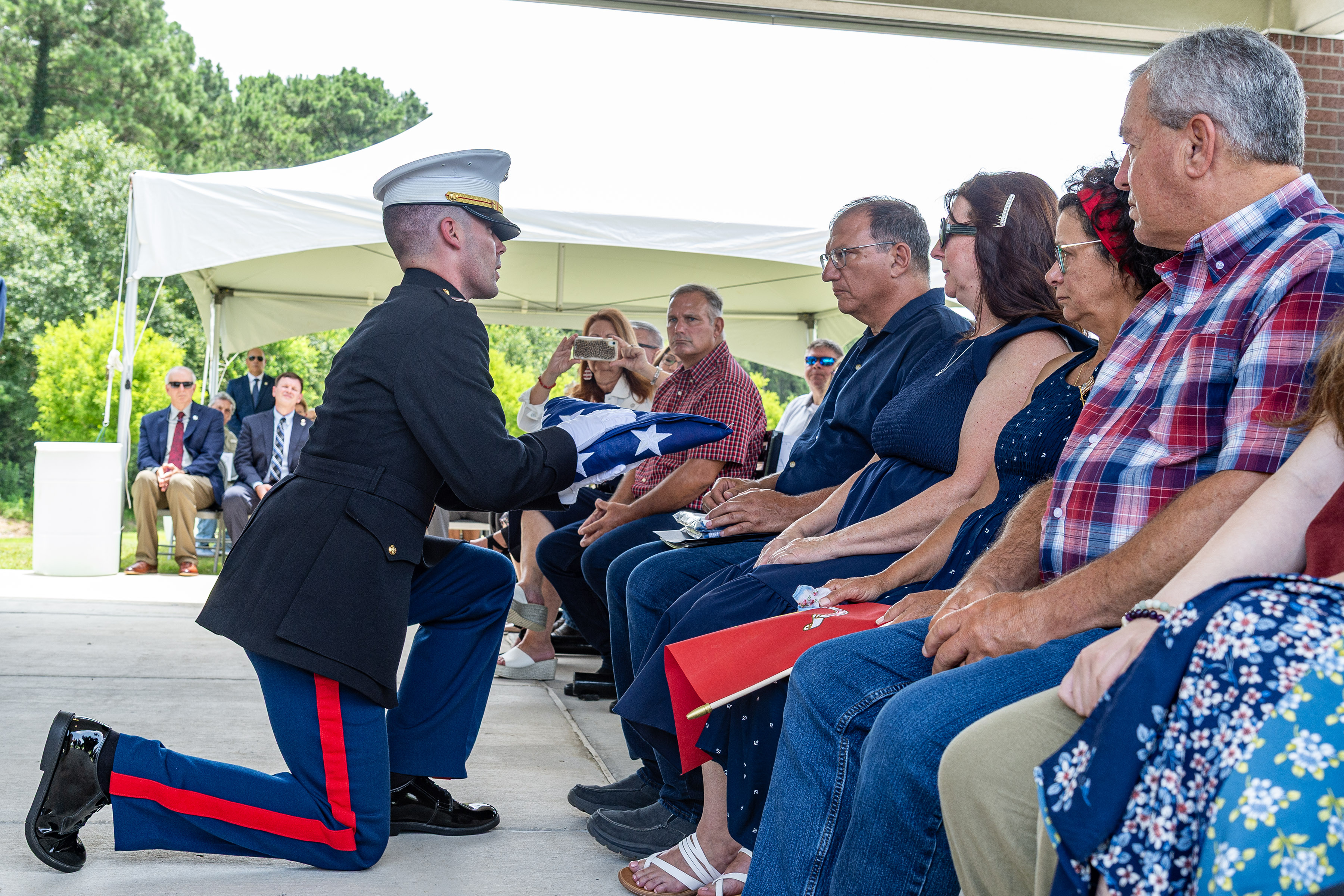Strengthening Community Lifelines Panel: Infrastructure, utilities improved since 2020 hurricanes
Published 11:01 am Friday, August 30, 2024

- A Lake Charles residents tries to clear a roadway of fallen tree limbs on Aug. 28, 2020, a day after Hurricane Laura made landfall in Southwest Louisiana. (American Press Archives)
Community lifelines and utilities are stronger since 2020 when Hurricanes Laura and Delta offered painful and valuable lessons, and infrastructure hardening efforts will continue.
“In today’s day and age, being able to connect to the internet is important to be able to get the word out to loved ones that you’re okay, or be able to connect with emergency services if you’re not okay, or just (use the Internet as) a simple distraction after you spent all day in the yard clearing trees,” said Chris Fontenton, director of operations at Vexus.
Vexus is building a 100 percent underground fiber network. Fontenot was one of four panelists on the Strengthening Community Lifelines Panel, part of the LC Resiliency Summit held at the Event Center Tuesday to highlight how a place The Weather Channel once described as “America’s Most Weather-Battered City picked itself up to make incredible strides in recovery.
“You can’t be storm proof. There’s just no such thing, although you can put yourself in a better position to respond,” Fontenot said.
(An underground fiber signal transmits data even when the electricity is off. Routers run on electricity.)
Fontenot said it costs the company more to install underground fiber, rather than a mixed bag of above and below installation, but he is betting on it saving “us a ton of money in restoration costs, and also allows us to be that more reliable, more consistent provider.”
Panelist Perry Vincent. President LRC Wireless said one of the ways his company has made advances in hardening infrastructure is the completion of a new communications tower that will handle a 175 mph sustained wind load, “which will probably never come close,” he said.
The state of Louisiana and others are using the site.
“We’re resilient to where we’ve got a communications structure that will give us responsive radio communications, radio broadcast on the radio station in your car even if we’re dead in the water and nothing else is going on.”
Panelist Josh Fontenot, Wagoner Engineering, told how the City of Lake Charles is improving its seven water plants and wastewater facilities.
He also offered a very commonsense approach to how other entities can do what’s needed to prepare for disaster. Put redundancy measures in place and manage assets.
“You never know when you’re going to lose something. Asset management is pretty key. You can only take an asset’s existence to heart so much until you need to gain an appreciation of what the life cycle of that asset is. So, acknowledge how long the asset is going to last and have a plan in place to replace it. Don’t wait until it dies. That’s not technology. That’s common sense, but there is technology in place to help you manage your asset system. That’s one thing I’d like to see us continue to develop, an asset management program driven by technology.”
Phillip May, President and CEO, Entergy Louisiana told about the company’s plans to make the electric grid more resilient with new poles and gave a nod to solar energy during the the presentation moderated by Andre Bonton, pro-chemical industry veteran.
“When we buy solar from a facility, it has to meet certain resilient requirements. We want to make sure those things will be able to deliver power following a storm. So there’s things like, how deep are the foundations and how does the tracker work. Because most of these things track the sun. Is it rated for a major storm, those kinds of things. Solar is something we can add and right now it is very economic to do that.”
May said regardless of who wins the election, customer preferences, not policies drive the need for green energy.
Louisiana leads the Gulf Coast region in total energy manufacturing announcements and Louisiana recently approved the largest renewable expansion in state history, he pointed out. That makes him optimistic about future industrial development, new jobs tied to that development and how a more resilient infrastructure will help combat population loss. If there is a storm, people return after it and are able to return sooner. Young people will stay in the state after graduation because the jobs will be here for them after graduation.
“I have been more excited about the future of this state than I have been in my 38 years in this industry,” May said.




